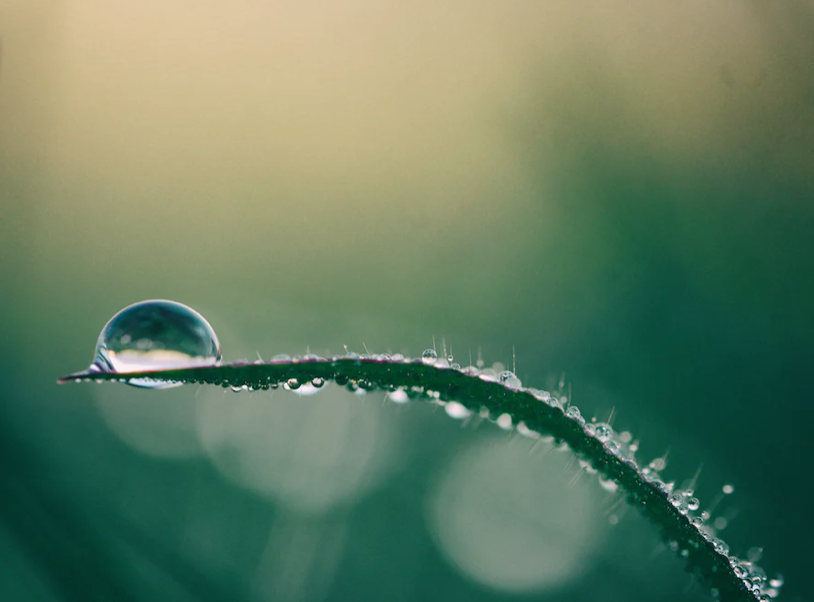Rain, that soothing natural occurrence, has an untapped potential that extends far beyond its calming effects and its vital role in replenishing water resources. Rain has an exciting prospect that hasn’t been thoroughly explored, which is the ability to produce energy. In recent years, this idea has been explored through rigorous scientific studies.
It can at first seem exaggerated to want to use raindrops’ kinetic energy as a significant source of power. However, the fusion of technical advancement and scientific inquiry has moved this idea into the realm of possibility. The principles of solar panel technology and the practice of raindrop gathering are smoothly combined in one such innovation, which we shall examine in further detail.
From Theory to Reality
By finding and creating specialised materials with distinct qualities required for raindrop energy collection, materials scientists have played a crucial role. The use of piezoelectric materials is one of the most important developments. When mechanical stress or deformation, such as from the impact of raindrops, is applied to these substances, they display a particular property in which they produce an electric charge. Engineers have created inventive methods that can transform raindrop energy into a useful electrical source by utilising this feature.
Additionally, improving the effectiveness of raindrop collection has been made possible by the development of improved coatings and surface treatments. These improvements make sure that raindrops contact with the materials for energy collecting in the best possible way. In order to expand the surface area available for raindrop contact and further enhance efficiency, researchers have also investigated the use of microstructures and nano-scale designs.
The combination of these technical developments not only makes it possible to absorb raindrop energy efficiently, but also marks a significant step in the search for renewable energy sources. Previously thought of as a transient natural phenomenon, raindrops are now recognised as a potential resource that might help meet our always increasing energy demands.
Innovative Technology Solutions to produce electricity from rain drops
Piezoelectric Materials
Piezoelectric materials are a prominent resource in power generation from rainwater. When mechanical stress or deformation from the impact of raindrops is applied to them, they produce an electric charge. The electric charge can be used to captures electricity.
Hybrid Systems
An inventive way to guarantee a consistent and dependable power supply is to combine the energy output from raindrops with other renewable energy sources, such as solar panels. These hybrid systems have the benefit of using power produced by raindrops when it rains and effortlessly transitioning to alternate sources like solar when it’s dry.
Scalability
The production of raindrop energy is now being scaled up from small-scale prototypes to bigger, more useful applications. Scalability is an important factor when incorporating raindrop energy into larger energy infrastructures. The innovators would like to use the power of rainfall to satisfy the energy needs of entire towns by developing technologies that can be installed on a wider scale. In order to achieve this goal, it is necessary to overcome issues with grid integration, infrastructure, and the environmental effects of large-scale deployment.
Advanced Coatings and Surface Treatments
The way raindrops interact with the energy-harvesting surfaces has a big impact on how effective it is. Scientists have come up with complex coatings and surface treatments to optimise this interaction. These innovations guarantee that raindrops disperse uniformly and stick to the surface. These coatings frequently have superhydrophobic or hydrophobic qualities, which lower energy loss from runoff and raise the general effectiveness of raindrop harvesting devices.
Microstructures and Nano-Scale Designs
In order to increase the effectiveness of raindrop energy generation, microstructures and nanoscale designs are increasingly being studied. In order to maximise the surface area accessible for raindrop contact, scientists are adding micro- and nano-scale designs into the collecting surfaces. This makes it possible to harness raindrop energy more effectively and broadly. Such complex patterns also lessen energy loss from raindrop spatter.
The Science Behind Raindrop Energy
Raindrops appear to be soft, yet because of their mass and velocity, they actually contain kinetic energy. Even if raindrops are thousands of feet in the air, they do not descend at a rapid rate. Instead, they quickly achieve a terminal velocity when the force of air resistance equals the gravitational attraction. Because the terminal velocity is influenced by air resistance, the value varies depending on the size of the raindrop. For instance, a larger raindrop may have a terminal velocity of 10 metres per second (m/s), whereas drizzles might have a terminal velocity of just metres per second.
The kinetic energy is delivered when these raindrops come into contact with a harvesting surface that has been specifically engineered. In response to this mechanical stress, some materials, such as piezoelectric compounds, produce an electric charge. It’s similar to transforming the power of raindrops into a brief electrical shock. An essential element of raindrop energy generation is choosing materials that can effectively convert this energy. The structure and makeup of the surfaces used to collect raindrops have a significant impact on how effectively they generate energy. To maximise energy capture, scientists carefully construct these systems. They take into account elements including the surface’s angle and curvature, material selection, and even surface treatments.
Once electricity produced by raindrops has been captured, it has to be handled and stored for later use. Systems for managing energy and specialised circuitry are used. They make sure the energy is efficiently stored in capacitors or batteries. Additionally, these technologies control power flow and make it work with current electrical networks. In order to provide a constant and dependable power supply from raindrop energy, efficient energy management is essential.
The Challenges to Raindrop Energy
Variability of Rainfall
Rainfall is variable in terms of both frequency and intensity. Systems for generating energy from raindrops are severely hampered by this fluctuation. In order to be a dependable source of electricity, these systems must be able to withstand unpredicted rainy spells and maintain steady energy output. To successfully tackle this issue, advanced forecasting and energy storage technologies are required.
S

Umbrella with rain drops over.
Source: Adobe Stock
Energy Storage and Distribution
Since it is reliant on rainfall, raindrop energy is transient. A significant difficulty is effectively storing and dispersing this energy. In order to retain surplus energy during rainy seasons and release it when needed, battery technology and energy management systems must be upgraded. Technical challenges arise when incorporating power produced by raindrops into current electrical systems.
Cost-effectiveness
Cost is a major obstacle in the development and use of raindrop energy production technologies. While improvements are being made, it is crucial for their adoption to make sure that these systems are more affordable than other renewable energy sources. Continuous efforts are made to lower production costs, boost energy output, and improve manufacturing procedures.
Conclusion
Raindrop energy generation stands out as a noteworthy and developing challenger in the search for clean and renewable energy sources. The goal of harnessing the massive kinetic energy of rain may get closer to reality as research and development move further. Raindrops, a once-overlooked feature of the natural world, may very well play a significant role in our constantly changing energy landscape, paving the way for a more sustainable and environmentally friendly future.
If you enjoyed reading this post, please subscribe to our newsletter or Visit our Shop to buy geeky science merchandise.



2 comments
I do not even understand how I ended up here, but I assumed this publish used to be great
Hi there to all, for the reason that I am genuinely keen of reading this website’s post to be updated on a regular basis. It carries pleasant stuff.